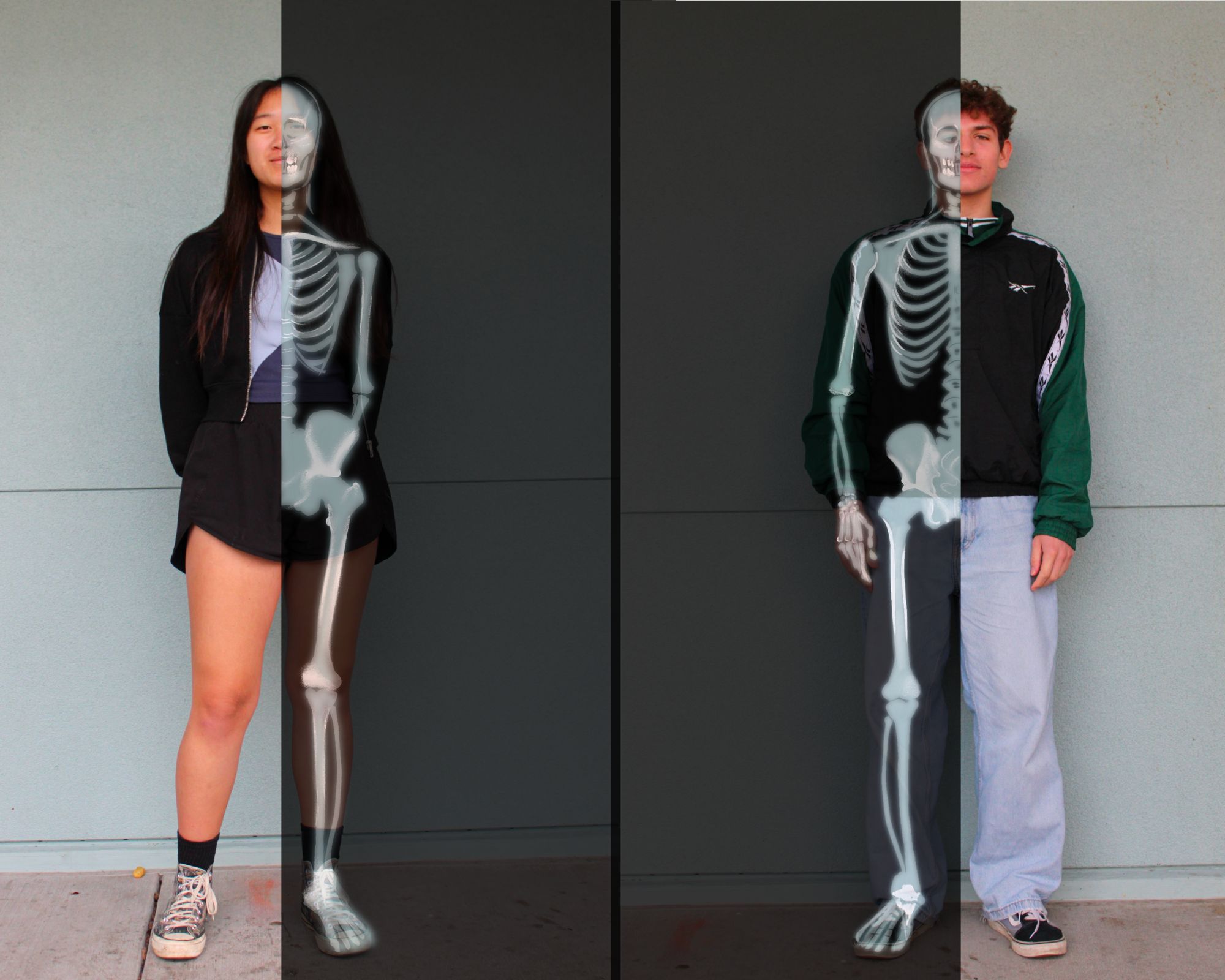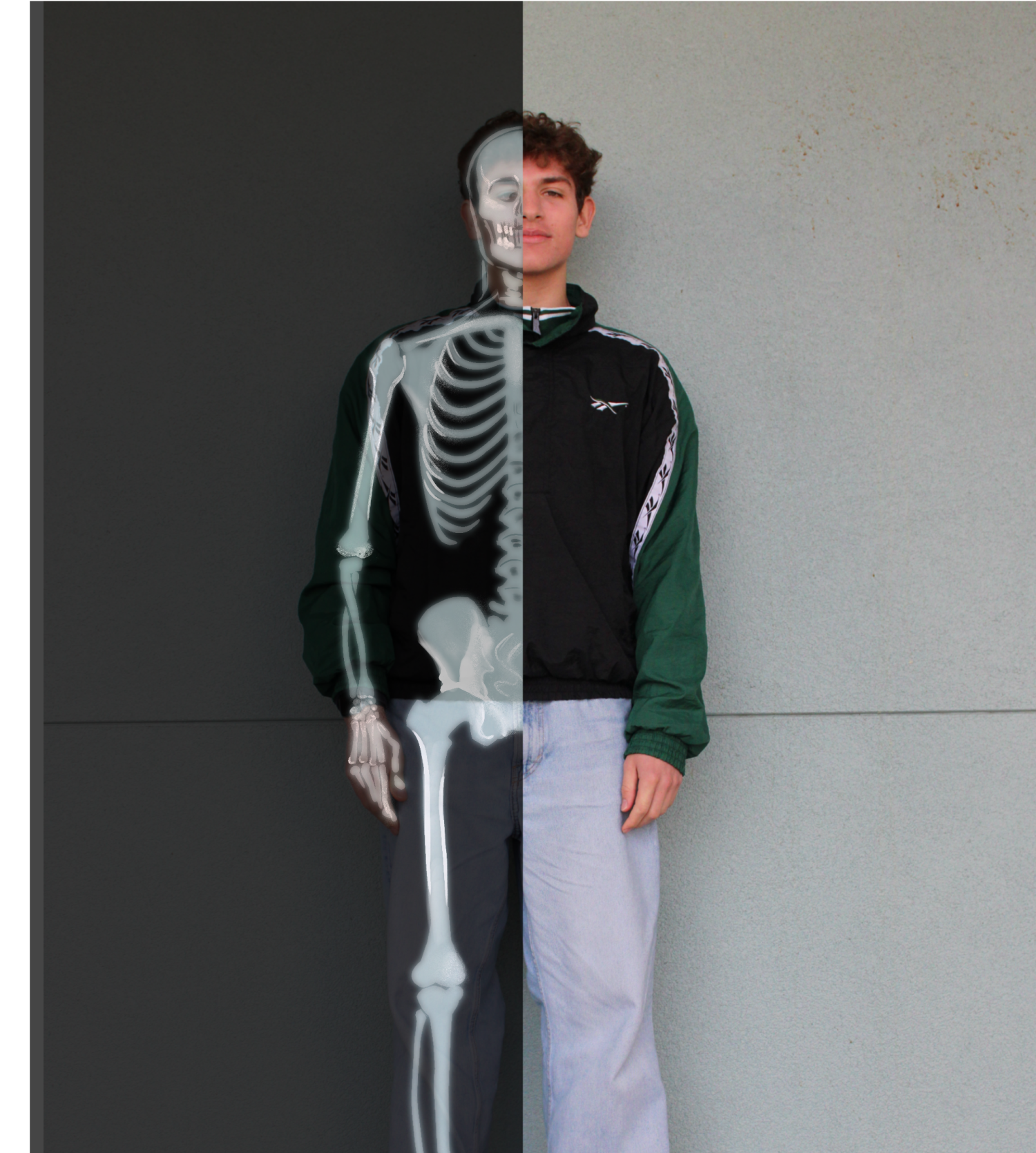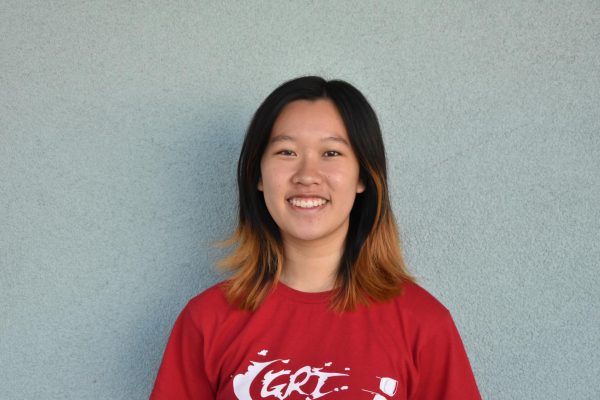More than skin-deep: Students share journeys with concealed health conditions


As a sixth grader, sophomore Stella Xue winced each time she took a step — sharp pain traveled through her foot at every pace. After a visit to the doctor, she discovered the culprit: a small, extra bone in her foot, known as the os trigonum.
The os trigonum, present in around 15 to 30% of people, sits behind the ankle bone. Those who have it are born with it, and while some never experience discomfort because of the bone, others can develop great pain after injury or heavy use of their ankle.
Xue had been extremely active as a basketball player, swimmer and dancer, which strained her ankle. After her diagnosis, she temporarily stepped back from sports to recover, spending six months in physical therapy.
During these sessions, she was able to rest her foot and recover from the worst of her pains. She also learned how to take better care of her foot while easing it back into normal use.
“I (would walk) really weirdly, kind of with a limp where I didn’t put that much pressure on it,” she said. “It helps in the moment, but when you do it for such a long time, you gain bad habits while you’re walking. The physical therapy was getting me back to walking normally — putting pressure back on my foot while also trying to work out the pains in it.”
In eighth grade, Xue returned to sports through taking up tennis. However, her ankle still made her more injury-prone, causing her to sprain it while playing tennis and hurt it two more times during her P.E. class.
“My first tennis class, I sprained my ankle,” she said. “But I thought it was just another one of my ankle scares. I didn’t think it was serious. I thought I could just walk it off. … (After hurting it again), we went to a doctor, and the doctor was like, ‘You sprained it three times. What are you doing?’”
Though Xue wore a brace for several months to help support her ankle, she now mostly only wears it when she does long or highly intensive activities.
“It’s not good to get dependent on the brace,” she said. “So after a while, when I did actually get back into tennis, I started taking it off more and more to get more acclimated. Now, I can go for a two- or three-hour session without it, which is pretty good.”
Xue has learned to work with her ankle and hasn’t let it stop her from continuing tennis and also beginning running this season.
“Sometimes if I run for too much — especially if we do a mile during P.E. or something — it will start aching again,” she said. “But it’s not that painful anymore.”

After visiting the doctor in November 2022 for what he thought was just an allergic reaction, junior Charlie Ott discovered that his regular skin inflammation were a symptom of a condition that he had unknowingly dealt with his whole life.
Atopic dermatitis, more commonly known as eczema, weakens the skin’s protective barrier function, causing it to become dry, itchy and bumpy. While the exact cause of eczema is unknown,
according to the National Eczema Association, it often develops due to genetic or environmental triggers. Ott’s eczema is mostly the result of an overactive immune system, as various foreign substances tend to irritate his skin. There have been times — ranging from a few days to a couple of months — when Ott’s
skin would flare up unexpectedly.
“It was extremely painful to do simple things like put on clothes or rest my arm on my desk,” he said. “I never found out what caused it, so many things flared up my eczema that it was difficult to find out exactly what might have caused it.”
When Ott was young, rashes and itches seemed normal: His immune system was still developing. As he grew older, however, they persisted and worsened, resulting in uncomfortable interactions with peers.
“A lot of people thought that if they touched me or something, they’d get flare-ups or a rash from me, which is not true,” he said. “Eczema is just something you’re born with — it’s in your body and won’t spread to anyone else.”
While Ott’s eczema lessened in severity during middle school and early high school, it reemerged in his sophomore year, spurring anxiety.
“Having all those noticeable rashes on my arm, I was always worried people would want to be away from me or that they would think of me differently just because of how my arms look,” he said.
His November diagnosis that year provided clarity and helped him begin to manage his symptoms.
“My doctor told me I had an autoimmune condition, and I got a little scared because it meant that my body was attacking itself, and I didn’t like that idea,” he said. “So I was worried for my future, but it’s a pretty treatable condition.”
Throughout Ott’s medical journey, he has been prescribed various creams and steroids. After exploring many short-term solutions, he was eventually prescribed Dupixent, a monoclonal
antibody drug, at the end of last year.
“Being on Dupixent has been peaceful,” he said. “Although once every two weeks I have to take a pretty painful injection, it’s totally worth it to be able to put my arm on a table without it stinging or put on my shirt without my arms getting itchy again. I haven’t had to worry about eczema in a long time, and that’s just been a real blessing.”
As a wrestler, eczema didn’t directly impact Ott’s performance, but it left a persistent worry as he started back up again the season after getting diagnosed.
“When I was getting my athletic clearance for wrestling, they took quite a while to clear it because they were worried that since I have sensitive skin, I might worsen my eczema or contract some skin disease really easily,” Ott said.
Ott’s experience with eczema has profoundly changed from the confusion of his earlier years: Now, with the proper diagnosis and medication, he is able to better understand and feel comfortable in his own skin.
“Growing up, I didn’t really know what it was,” he said. “I just knew that my parents would always have to take some extra time to take care of it. Now that I know it’s a genetic thing and started treating it with medicine, I don’t worry as much about what I wear or eat, and I don’t even have to worry as much about getting flare-ups anymore.”
Your donation will support the student journalists of Henry M. Gunn High School. Your contribution will allow us to purchase equipment and cover our annual website hosting costs.






